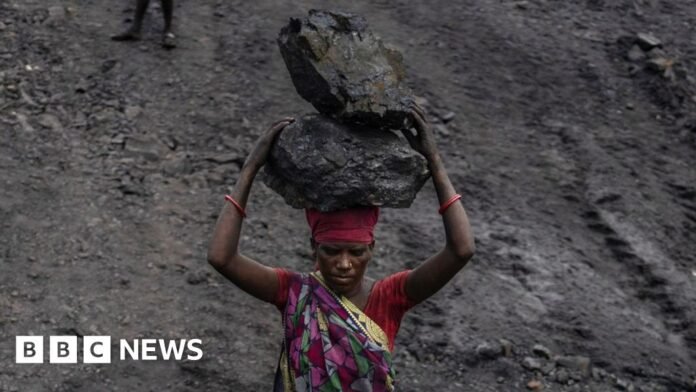Contents
India’s Reliance on Coal: Why the Country is Struggling to Reduce Emissions and Transition to Renewable Energy
India, the world’s third-largest carbon emitter, is facing a monumental challenge in reducing its reliance on coal, which currently generates over 70% of the country’s electricity. Despite international pressure to transition to renewable energy sources, India’s growing power demands and lack of large-scale energy storage capacity have made it difficult for the country to phase out coal entirely. In this article, we will explore the reasons behind India’s dependence on coal, the environmental costs of this reliance, and the potential solutions to reduce emissions from coal-fired power plants.
India’s reliance on coal is a complex issue that involves multiple factors, including the country’s growing power demands, lack of large-scale energy storage capacity, and the need for constant supply from thermal plants to maintain grid stability. The country’s electricity demand has grown by over 9% between 2021 and 2025, surpassing previous predictions, and is expected to double by 2030. Coal-fired power plants have generated over 70% of the total electricity supply every year since the early 2000s, and this figure remains unchanged. While India has made progress in meeting its renewable energy targets, with renewable sources contributing 46% of the country’s total installed capacity, the limitations of these sources, including intermittency and lack of energy storage capacity, have made it challenging for the country to reduce its reliance on coal.
The Environmental Cost of Coal
The environmental cost of India’s reliance on coal is huge, with estimates suggesting that the country’s electricity generation alone accounts for over 40% of the annual carbon emissions. Nearly three-quarters of this electricity comes from coal-burning, making it a significant contributor to greenhouse gas emissions. The World Health Organization (WHO) estimates that air pollution from coal-fired power plants is responsible for thousands of premature deaths in India every year. Furthermore, the extraction and transportation of coal have devastating environmental impacts, including deforestation, water pollution, and soil degradation.
Challenges in Reducing Emissions from Coal-Fired Power Plants
Reducing emissions from coal-fired power plants is a challenging task that requires significant investments in technology and infrastructure. One of the main challenges is the need to maintain a minimum running level of thermal plants, even during the day when renewable sources are available, to ensure grid stability. This means that operators cannot ramp up capacity to the fullest at short notice, particularly during peak hours in the evening when supply from renewables is down. Experts say that there is an urgent need to make thermal plants more efficient so they can run at a lower capacity. Some potential solutions include:
- Implementing technologies that capture carbon dioxide emissions from coal-fired power plants
- Burning agricultural residue in place of coal in thermal plants
- Improving the efficiency of thermal plants to reduce emissions
However, these solutions are not without challenges. For example, carbon capture and storage technology is still in its infancy, and the cost of implementation is high. Burning agricultural residue in place of coal is a promising solution, but it requires significant investments in infrastructure and technology.
Potential Solutions to Reduce Emissions from Coal-Fired Power Plants
Despite the challenges, there are potential solutions to reduce emissions from coal-fired power plants. Some of these solutions include:
- Improving energy efficiency: Improving the efficiency of thermal plants can help reduce emissions by minimizing energy waste and maximizing output.
- Implementing carbon capture and storage technology: Carbon capture and storage technology can help reduce emissions from coal-fired power plants by capturing carbon dioxide emissions and storing them underground.
- Burning agricultural residue: Burning agricultural residue in place of coal can help reduce emissions from thermal plants and provide a sustainable source of energy.
- Increasing investment in renewable energy: Increasing investment in renewable energy sources, such as solar and wind power, can help reduce India’s reliance on coal and decrease emissions.
In conclusion, India’s reliance on coal is a complex issue that involves multiple factors, including growing power demands, lack of large-scale energy storage capacity, and the need for constant supply from thermal plants. While there are potential solutions to reduce emissions from coal-fired power plants, including improving energy efficiency, implementing carbon capture and storage technology, burning agricultural residue, and increasing investment in renewable energy, these solutions are not without challenges. The Indian government must take a comprehensive approach to address the country’s energy needs while reducing its reliance on coal and minimizing the environmental impacts of energy production.
Keywords:
- Coal
- Renewable energy
- Energy storage
- Carbon emissions
- India
- Power demand
- Thermal plants
- Grid stability
- Carbon capture and storage
- Agricultural residue
- Energy efficiency
Hashtags:
-
Coal
-
RenewableEnergy
-
EnergyStorage
-
CarbonEmissions
-
India
-
PowerDemand
-
ThermalPlants
-
GridStability
-
CarbonCaptureAndStorage
-
AgriculturalResidue
-
EnergyEfficiency
